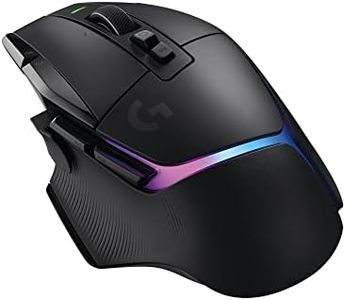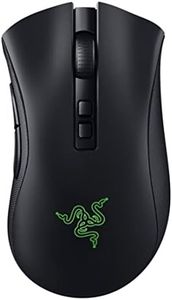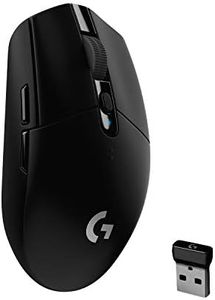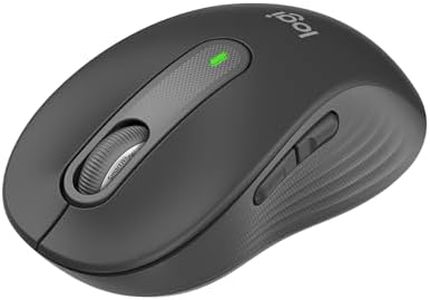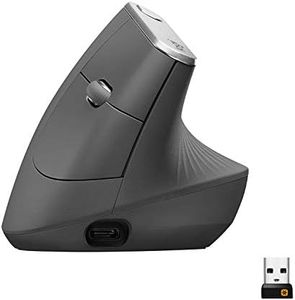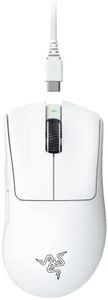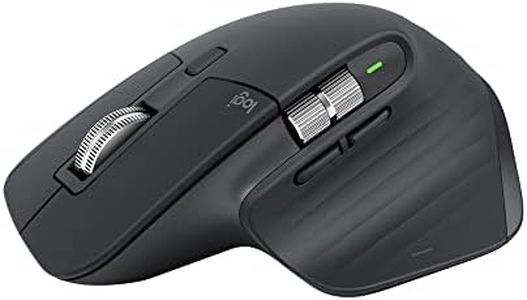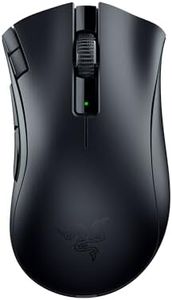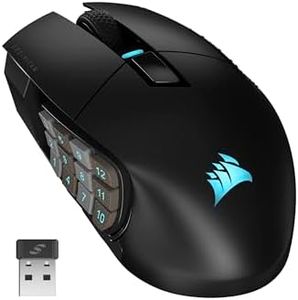We Use CookiesWe use cookies to enhance the security, performance,
functionality and for analytical and promotional activities. By continuing to browse this site you
are agreeing to our privacy policy
10 Best Wireless Mouses
From leading brands and best sellers available on the web.Buying Guide for the Best Wireless Mouses
Choosing the best wireless mouse for your needs comes down to thinking about how you plan to use it. Wireless mice come in many styles, each designed for tasks like office work, gaming, or portability. Before picking one, consider where you'll use it (at a desk, on the go, in meetings), what feels comfortable in your hand, and how much you value long battery life or fast response. Testing in store or reading reviews about comfort can be helpful since fit is personal. Understanding key features will help you pick a wireless mouse that's reliable, feels good in your hand, and suits how you like to work or play.Sensor TypeThe sensor in a wireless mouse tracks the movement of your hand and translates it into pointer movement on your screen. There are generally two types: optical and laser sensors. Optical sensors work well on most non-glossy surfaces, while laser sensors can track on more surfaces like glass or glossy tables. If you mostly use your mouse on regular mousepads or wooden desks, an optical sensor is usually sufficient. However, if you want flexibility to use your mouse on many different types of surfaces, a mouse with a laser sensor might be a better fit.
DPI (Dots Per Inch)DPI measures how sensitive the mouse is to movement. A lower DPI means the mouse pointer moves slower, which can help with precise tasks like photo editing, while a higher DPI makes the pointer move faster—handy for quick movements, common in gaming. Common DPI ranges are from about 800 to 4000, with some mice offering even higher. If you use your mouse for regular work or web browsing, a mid-range DPI is comfortable. For precise design work, go lower, and for fast-paced work or gaming, you might prefer a higher DPI. Many mice let you change DPI settings, which is useful if your usage varies.
Battery LifeWireless mice are powered by batteries, either replaceable (like AA or AAA) or rechargeable ones. Some models last weeks or months on a single charge, while others might need more frequent charging. If portability and minimal charging are essential—for example, if you travel often—look for a mouse known for long battery life. Rechargeable mice can be convenient if you dislike changing batteries, but you’ll need to remember to charge them. Think about how tolerant you are of charging or replacing batteries, and choose accordingly.
Connection TypeWireless mice commonly connect via Bluetooth or with a USB receiver (dongle). Bluetooth mice can pair with multiple devices without taking up a USB port, making them ideal for laptops and tablets. USB receiver models usually offer a quicker and more stable connection, which can be a plus for gaming or if your environment has lots of wireless interference. If you often swap between devices or have limited USB ports, Bluetooth is handy, but if you want the simplest, lag-free setup, a USB receiver mouse works well.
Ergonomics and DesignErgonomics refers to how comfortable the mouse is to use over long periods. Mice come in various shapes and sizes—some are designed for portability and are smaller, while others are full-sized and sculpted for comfort. Some offer features for left-handed users or those with larger or smaller hands. If you spend hours with a mouse, pick one that feels natural in your hand to avoid strain or discomfort. Try different shapes and finishes (matte, glossy, rubberized) to see what’s most comfortable for you. Portability-focused mice are better if you're on the move, but they can be less comfortable for all-day use.
Programmable ButtonsSome wireless mice have extra buttons that you can customize for tasks, like navigating web pages, launching programs, or special shortcuts in games. If you do a lot of specialized work, or if you game, having customizable buttons can speed things up and make your workflow smoother. For basic office work or casual use, you might not need extra buttons, and a simpler design could be preferable.
Build QualityBuild quality refers to the materials and construction of the mouse, which affects how durable and comfortable it feels. Heavier, sturdier mice often feel nicer but can be less portable. Lightweight models are easier to carry but may feel less premium. If you’ll keep the mouse on your desk at home or the office, prioritize comfort and sturdiness, but if you'll travel, something lightweight and compact could work better. Look for textured surfaces for grip if you have sweaty hands or plan to use it for extended periods.
